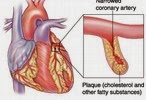Gestational Trophoblastic Disease (GTD)

Gestational Trophoblastic Disease (GTD)
Gestational trophoblastic disease (GTD) encompasses a large group of neoplastic diseases arising from trophoblastic tissue. The most common diseases are the following:
- Hydatidiform mole-Complete and Incomplete mole
- Invasive mole (Chorioadenoma destruens)
- Choriocarcinoma
- Epithelioid trophoblastic tumor
- Placental site trophoblastic tumor
In addition, there are some proliferations of trophoblastic tissue which are benign but may histologically mimic disease.
- Miscellaneous trophoblastic lesions
- Exaggerated placental site
- Placental site nodule or plaque
Patients with molar pregnancy, the most common form of GTD, may present with vaginal bleeding and excessive uterine enlargement for gestational age, usually between 11-25 weeks of pregnancy. Pregnancy induced hypertension may occur in 1/4 of patients. Other presenting signs include hyperthyroidism and hyperemesis gravidarum. Characteristically, the serum HCG is elevated. An ultrasound of the uterus reveals a characteristic snowstorm pattern, representing the hydropic chorionic villi which characterizes the disease. After evacuation of the uterus, careful clinical follow up with serial measurements of the serum HCG is necessary to ensure there is no recurrence and all of the disease has been removed.
Incidence
Complete Mole
- 1/1000 pregnancies
- Most frequent form of molar pregnancy and GTD
Incomplete mole
- 25-74% of all molar pregnancies
Choriocarcinoma
- 1/20,000 pregnancies
- The more abnormal the pregnancy, the more likely this will occur
- 1/160,000 normal gestations
- 1/15386 abortions
- 1/5333 ectopic pregnancies
- 1/40 molar pregnancies
Epithelioid trophoblastic tumor
- Very rare
Placental site trophoblastic tumor
- Rarest form of GTD
Age Range
- Usually disorders of reproductive age
- Increased risk of moles at the extremes of reproductive age
- Complete mole : 11-25 weeks of pregnancy
- Incomplete mole : 9-34th weeks of pregnancy
- Invasive mole : May occur simultaneously with intracavitary molar pregnancy
Risk Factors
- Low socioeconomic conditions
- Diet : Possible dietary deficiency of carotene
- Blood groups : Choriocarcinoma more frequent in Blood Group A
Stronger for women of type A and husbands of type O and conversely for group O women and type A husbands
- History of prior spontaneous abortions : More common in hydatidiform mole and choriocarcinoma
- Term pregnancy and live births : Protective effect and increases with an increased number of live births
Pathogenesis
Complete Mole
46XX with both X chromosomes androgenic or paternal origin-Results from duplication of the haploid sperm in an empty ovum. 3-13% have normal 46XY but both XY chromosomes are paternal-Results from dispermy, fertilization of an empty ovum by two sperm. Hydatidiform moles are pregnancies characterized by abnormal development of both embryonic and extraembryonic tissues and are associated with the misexpression of imprinted genes. The vast majority of complete hydatidiform moles are diploid and androgenetic, whereas partial hydatidiform moles are triploid, with an extra set of chromosomes of paternal origin.
Incomplete Mole
Triploidy (69 chromosomes) with maternal chromosome complement. Most are 69XXY, 69XXX, and rarely 69XYY. Results from fertilization of an egg with a haploid set of chromosomes by either two sperms, each with a haploid set of chromosomes or by a single sperm with a diploid genome of 46 XY (diandric-paternally derived triploidy).
Placental site trophoblastic tumor (PSTT)
Placental site trophoblastic tumor (PSTT) is a neoplastic proliferation of the implantation intermediate trophoblast.
Laboratory Investigations
- FISH: Determination of DNA ploidy by fluorescence in situ hybridization (FISH) in hydatidiform moles: Evaluation of FISH on isolated nuclei.
- β- hCG
- In the past 20 years, the diagnosis of hydatidiform moles has become more difficult because of the widespread use of early uterine evacuation. Differentiating hydropic degeneration, partial, and complete moles is important because of their different prognosis. However, clinical diagnosis is less obvious, and the pathologist has to separate the different entities on the basis of very subtle morphologic criteria.In difficult cases, ploidy may be determined by various methods, including fluorescence in situ hybridization (FISH) on routine histological sections from paraffin-embedded specimens. However, FISH analysis is often difficult because of the presence of numerous truncated nuclei. In this context, we have tested the advantages of FISH on isolated nuclei, a well-known variant of the technique that might be more sensitive.
Gross Appearance
Complete mole
- Hydropic chorionic villi
- Large for dates uterus
Incomplete mole
- Often small for dates uterus, resembling a missed abortion
- Volume of tissue usually <200 ml
- Villi are grossly enlarged but smaller than seen in a complete mole
Fragments of normal placenta and a fetus may be found
Invasive mole
Requires demonstration of molar villi invading into the myometrium or deported to extrauterine sites.
Choriocarcinoma
- Usually presents with abnormal uterine bleeding but symptoms of metastases may be the first symptom.
- Dark red hemorrhagic mass with a shaggy irregular surface.
Epithelioid trophoblastic tumor
- Similar presentation as choriocarcinoma and invades the myometrium in an expansile rather than permeative growth
- Not associated with central necrosis or hemorrhage
- Elevated serum β-HCG
Placental site trophoblastic tumor
- Variable in size but may present with diffuse nodular enlargement of the myometrium-occasionally polypoid projecting into the uterine cavity
- Invasive tumor frequently extends into the uterine serosa and adnexal structures
Histological Types
1. Complete mole
- Enlarged edematous chorionic villi with central cisterns
- Usually avascular villi
- Haphazard circumferential trophoblastic proliferation around the villus
2. Incomplete mole
- Molar change is focal with a mixture of edematous villi and small relatively normal sized villi
- Central cisterns are less conspicuous
- Smaller villi with stromal fibrosis
- Invaginations of trophoblast into the villous stroma giving a scalloped appearance, appearing as inclusions within the stroma
3. Invasive mole
- Molar villi with trophoblast within the myometrium or at an extrauterine stie
- Villi are usually 4-5 mm in diameter but hydropic changes are not as marked as in complete moles
4. Choriocarcinoma
- Masses and sheets of trophoblastic cells without villi invading the surrounding tissue and permeating vascular spaces
- Central hemorrhage and necrosis with a rim of viable tumor
5. Epithelioid trophoblastic tumor
- Admixture of intermediate, cyto- and syncytio-trophoblastic cells with considerable nuclear atypia
6. Placental site trophoblastic tumor
- Abundant extracellular eosinophilic fibrinoid is present within the tumor
- Blood vessel walls are extensively replaced by trophoblastic cells and fibrinoid material
- Extensive necrosis may be present
Metastasis
Lungs, brain, liver
5-Years Survival Rate
- In diseases treated with surgery and combination chemotherapy:
- Disease confined to uterus-100%
- Metastatic disease-83%
Treatment
- Combination of surgery with chemotherapy
- MAC-methotrexate, actinomycin D, and chlorambucil
Prognosis & Recurrence
1. Complete mole
- In more than 60% of patients who required chemotherapy, there were large for dates uteri and ovarian enlargement secondary to theca-lutein cysts
- 16% develop into invasive moles and 2.5% develop into choriocarcinoma
- 6-1.5% of patients are at risk of having recurrent molar pregnancies
2. Incomplete mole
- 5% will have persistent or metastatic GTD requiring chemotherapy
3. Invasive mole
- Choriocarcinoma occurs 6-10x more frequently than following a hydatidiform mole
- Metastases may occur in 20-40% of cases
4. Choriocarcinoma
- Metastases especially to brain and liver can occur in 20-60% of patients
- With chemotherapy, overall survival rate is about 90%
- Death usually occurs from hemorrhage and pulmonary insufficiency
5. Epithelioid trophoblastic tumor
- May have course similar to choriocarcinoma
6. Placental site trophoblastic tumor
- May cause perforation of the uterus
- About15-20% die of metastastic disease and may not be sensitive to chemotherapy-aggressive cases may have extensive necrosis with high mitotic rates
Staging of Tumor
| Staging of Tumor | ||||
|---|---|---|---|---|
| I | Disease confined to the uterus | |||
| IA | Confined to uterus with no risk factors | |||
| IB | Confined to uterus with 1 risk factor | |||
| IC | Confined to uterus with 2 risk factors | |||
| II | Tumor extending outside uterus but limited to genital structures (adnexa, vagina, broad ligament) | |||
| IIA | No risk factors | |||
| IIB | 1 risk factor | |||
| IIC | 2 risk factors | |||
| III | Tumor extending to lungs with or without known genital tract involvement | |||
| IIIA | No risk factors | |||
| IIIB | 1 risk factor | |||
| IIIC | 2 risk factors | |||
| IV | All other metastatic sites | |||
| IVA | No risk factors | |||
| IVB | 1 risk factor | |||
| IVC | 2 risk factors | |||
For downloading the article in PDFs format, click on the following button;
Featured Articles
Other Topics |














Leave a Reply